Whether you are trying to buy a New, Used or Refurbished computer, you need to know the steps to check the hardware specs of the computer that you are trying to buy.
Similarly, if you are trying to install AutoCAD, Photoshop and other resource intensive programs, you will find the need to Check RAM, Processor Speed and the type of GPU installed on the computer.
Another common reason for checking the computer specs is to make a decision about whether to go for a New computer or upgrade Hardware Specs of the existing computer.
Check Computer Specs in Windows 10/11
In general, most regular computer users are likely to be interested in finding the amount of Hard Disk Storage and RAM available on the computer.
If the computer is also being used to play games, you are likely to be interested in finding information about the Processor and GPU unit installed on the computer.
Those who are interested in upgrading the hardware installed on the computer are likely to be interested in finding information about the type, model and version number of the Motherboard installed on the computer.
1. How to Check RAM on Computer
You can follow the steps below to check the amount of RAM (Random Access Memory) installed on the computer.
1. Go to Settings > System > About.
2. On the next screen, you can find the amount of RAM installed on the computer.
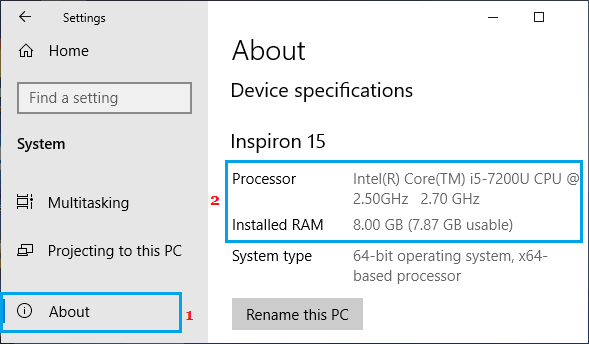
As you can see in above image, the computer has 8 GB installed RAM and 7.87 GB of usable RAM.
2. How to Check Processor Type and Speed
While you can find information about the Processor on “About” screen (Settings > System > About), detailed information about the Processor is available on the System Information screen.
1. Type “System Information” in the search bar > Double-click on System Information App.
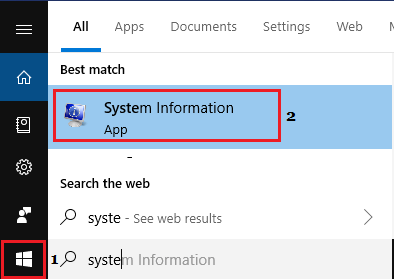
2. On the next screen, scroll down to Processor entry (right-pane), where you should find detailed information about the Procesor installed on the computer.
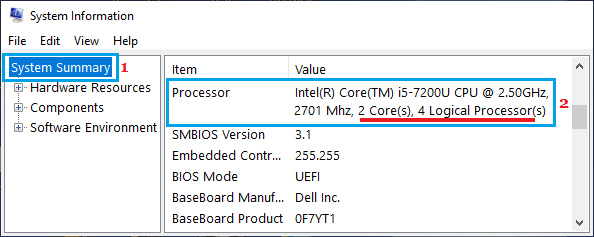
As you can see in above image, the computer is equipped with a 2 Core, Intel Core i5 Processor, with 2.5 GHz base speed.
3. How to Check GPU on Computer
Follow the steps below to check details of the Graphics Card installed on your computer.
1. Right-click on the Start button and click on Device Manager.
2. On the Device Manager screen, expand Display Adapters entry to see the GPU on your computer.
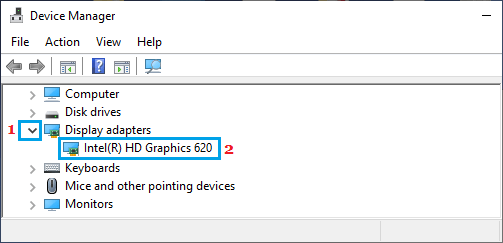
If you find two GPU entries, it means that your computer has a dedicated graphics card, in addition to the integrated graphics card in the processor.
Typically, the dedicated Graphics Card will be the second entry under “Display adaptors”.
For example, if you have an Intel processor, the integrated graphics will be named “Intel HD Graphics XXXX” and the second Graphics card will be named something like NVIDIA GeForce GTX 700M.
4. How to Check Storage Capacity of Computer
You can follow the steps below to find the storage capacity of a Windows computer.
1. Go to Settings > System > click on Storage in the left pane. In the right-pane, you will find the Storage capacity of your computer listed under “Local storage” section.
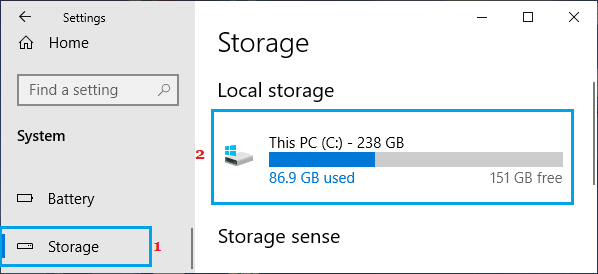
2. Click on This PC to see detailed information about usage of storage on your computer.
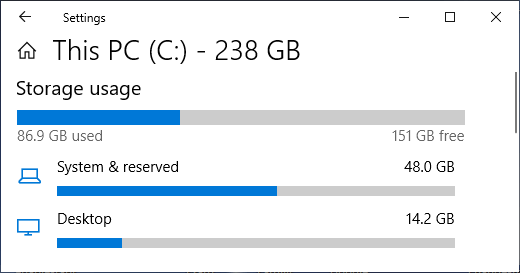
As you can see in above image, 48 GB space is reserved for the operating system and other System Files on your computer.
5. Does Your Computer Have SDD Storage?
Follow the steps below to find the type of storage (HDD or SDD), manufacturer and the model number of the Hard Disk Drive installed on your computer.
1. Open File Explorer on your computer.
2. Click on This PC (or My Computer) in the left-pane. In the right-pane, right-click on your Hard Disk and click on Properties.
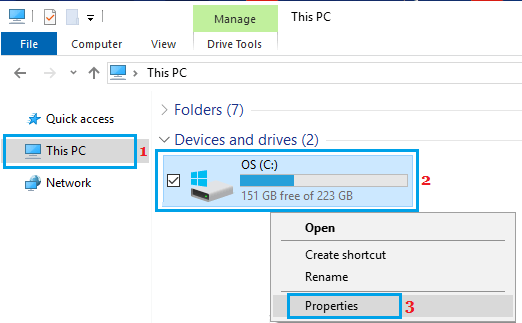
3. On the pop-up, select the Hardware tab and click on Properties button.
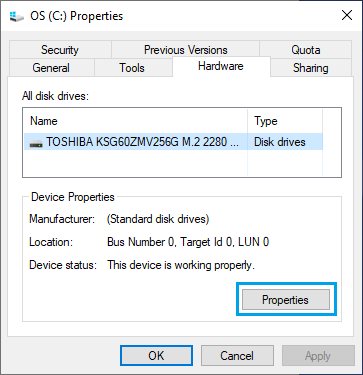
4. On the next pop-up, you will find the Manufacturer, Model Number and the type of Hard Disk installed on your computer.
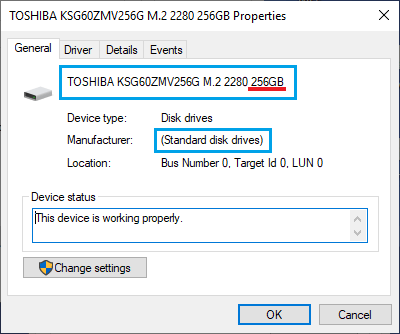
As you can see in above image, the computer has a Toshiba Standard Disk Drive (SDD) of 256 GB size.
6. How to Check Information About Motherboard
You can find the Model Number, Version and Serial Number of the Motherboard installed on the computer by using System Information App.
1. Type System Information in the search bar > Double click on System Information App.

2. On System Information screen, scroll down in the right-pane to BaseBoard (or Motherboard) entry and you will find information about the Motherboard of the computer.
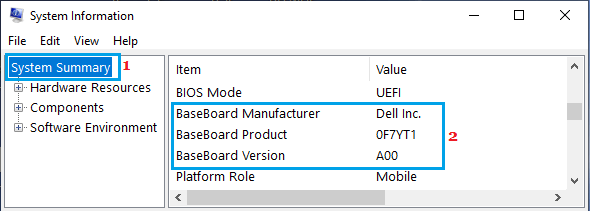
Many times information about Motherboard may not be clear. You will have to use command prompt to find Motherboard Model, Version and Serial Number.
3. Open Command Prompt > Type wmic baseboard get product, manufacturer, version, serialnumber and press the Enter Key.
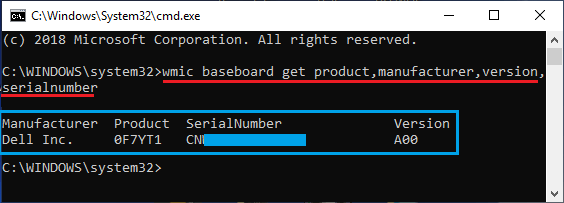
Once the above command is executed, you will find the Manufacturer, Serial Number and Version of the Motherboard installed on the computer.